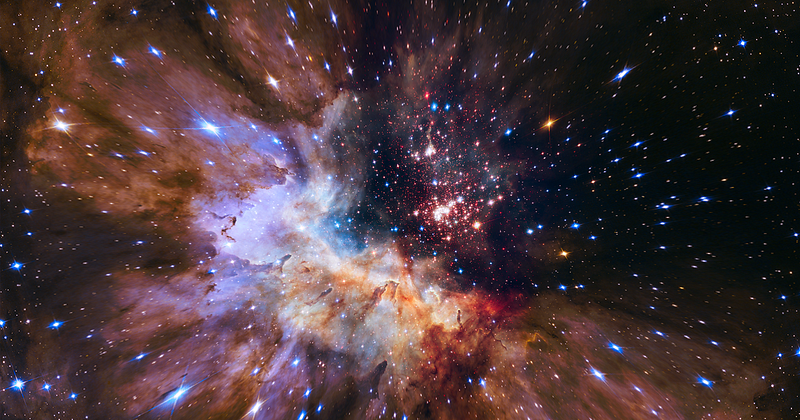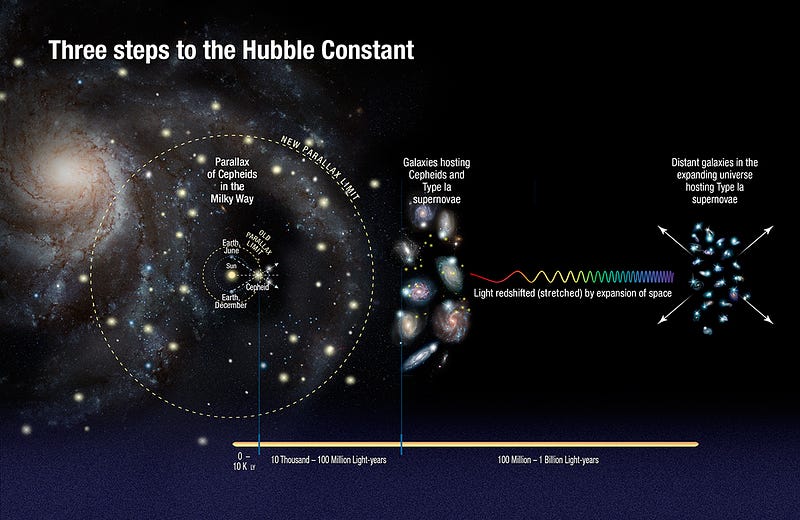Recent Insights into the Expansion Rate of the Universe
Written on
Chapter 1: Understanding the Hubble Constant
Recent studies have led to a recalibration of the ‘Hubble Constant,’ suggesting that the universe might be expanding at a slower rate than previously believed. While there is a consensus among scientists that the universe is indeed expanding, the precise rate of this expansion remains a topic of ongoing research. Edwin Hubble, a prominent astronomer, was the first to quantify this expansion, and the value he introduced is now known as the Hubble Constant. The well-known Hubble Space Telescope bears his name in recognition of his groundbreaking work.
Edwin Hubble’s initial calculation of 500 km per second per megaparsec (km/s/Mpc) sparked a debate with Albert Einstein, who had earlier proposed a static model of the universe. However, Einstein eventually adjusted his views after recalculating his theories. A megaparsec equals about 3.26 million light-years, indicating that galaxies further away from us are receding at higher velocities. Over the past decade, scientists have updated the Hubble Constant as observations have become more precise, thanks to advancements in technology.
Most recently, researchers at Clemson University have revised the Hubble Constant down to 67.5 km/s/Mpc (41.9 mi/s/Mpc), a decrease from the previous estimate of 70 km/s/Mpc (43.5 mi/s/Mpc). Earlier in 2012, the Spitzer Space Telescope reported a value of 74.3 km/s/Mpc (46.2 mi/s/Mpc), while the Hubble Telescope had derived 73.2 km/s/Mpc (45.5 mi/s/Mpc).

“Through our research, we utilized data from both terrestrial and orbital telescopes to derive one of the latest estimations of the universe's expansion rate.”
~ Marco Ajello, Co-Author of the Study
A team of ten scientists from Clemson reached this conclusion by analyzing the latest findings from the Fermi Gamma-ray Space Telescope and Imaging Atmospheric Cherenkov Telescopes. Their new calculation of the Hubble Constant was based on the study of extragalactic background light (EBL), which consists of all ultraviolet, visible, and infrared light emitted by stars and surrounding dust. The interaction of gamma rays—the most energetic form of light—with EBL results in a minor loss of intensity, providing valuable insights into their extensive journeys and aiding in the determination of the new Hubble Constant.
The first video titled "Do JWST's recent measurements break our understanding of the universe?" delves into how the latest findings from the James Webb Space Telescope may challenge our current understanding of cosmic expansion.
Section 1.1: New Theories on Universal Expansion
Recently, a new and somewhat controversial study has emerged, suggesting a departure from the widely accepted notion that the universe expands flatly, akin to a sheet of paper. Published in the Journal Nature, this research proposes that the universe inflates more like a balloon. The team arrived at this conclusion after analyzing a new data set concerning the cosmic microwave background (CMB). Although many in the scientific community disagree with this perspective, it has sparked fresh discussions among cosmologists.
Returning to the Hubble Constant, while the latest adjustment does not fundamentally alter our grasp of the universe, it may provide valuable insights into its history and future.

Chapter 2: The Hubble Constant and Its Implications
The recalibrated value of the Hubble Constant holds significant implications for our understanding of cosmic expansion.
The second video titled "How Fast Is The Universe Expanding? New Hubble Constant Value" explores the implications of the updated Hubble Constant and its significance in the broader context of cosmic studies.